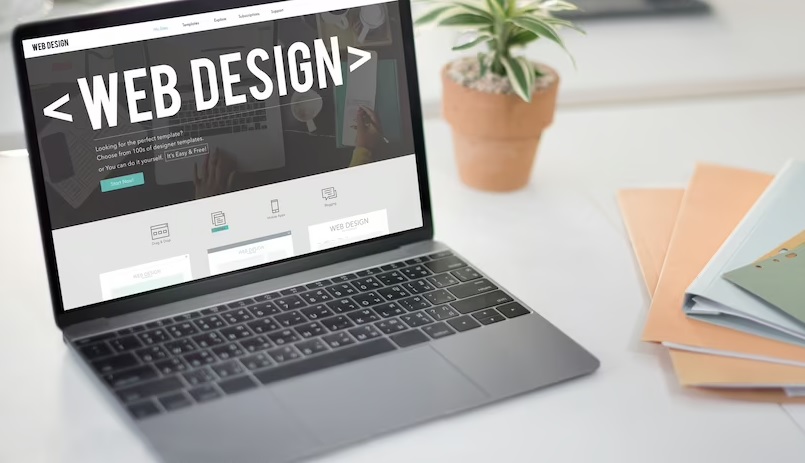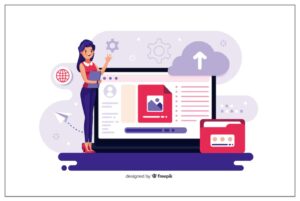Mastering The Art Of WordPress Web Design: Best Practices For Success

WordPress has become a popular platform for creating stunning and functional websites. Its user-friendly interface, customizable themes, and extensive plugin ecosystem make it a go-to choice for web designers. However, to truly excel in WordPress web design, it’s essential to understand and implement best practices that ensure a successful and impact website. In this blog, we will explore some key best practices for mastering the art of WordPress web design and creating websites that stand out from the crowd.
Plan Your Website
Effective web design begins with proper planning. Before diving into the design process, take the time to outline your website’s structure, layout, and content hierarchy. Consider your target audience, business goals, and desired user experience. Create a sitemap to Reduce load times by optimizing photos and videos for mobile devices. planning your website meticulously, you ensure that your design choices align with your objectives and provide a seamless user experience.
Choose the Right Theme
Selecting the right theme sets the foundation for your WordPress website designers. Look for a theme that aligns with your brand identity, offers the necessary features and customization options, and is well-supported by the developer. Check if the theme is mobile-friendly and responsive. Consider the theme’s performance and loading speed to provide an optimal user experience. Customizable themes are preferred as they allow you to tailor the design to your specific needs. Invest time in researching and testing various themes to find the perfect fit for your website.
Optimize for Speed
For the overall user experience and search engine rankings, website performance is essential. Optimize your WordPress website for speed by optimizing images, minimizing code, and utilizing caching plugins. Select a reputable hosting company with quick server response times. Use tools like Google Page Speed Insights or GTmetrix to frequently check the performance of your website. Address any performance issues promptly to ensure a fast and responsive website. A speedy website enhances user satisfaction, reduces bounce rates, and improves search engine visibility.
Focus on Mobile Responsiveness
With the increasing use of mobile devices, it’s essential to prioritize mobile responsiveness in your WordPress web design. Select a responsive theme that can adapt itself to various screen sizes and resolutions. Test your website on various devices to ensure it looks and functions optimally. Reduce load times by making images and videos suitable for mobile viewing. Pay attention to font sizes and spacing to enhance readability on smaller screens. By providing a seamless mobile experience, you cater to a larger audience and improve user engagement.
Maintain a Clean and Consistent Design
A clean and consistent design enhances the user experience and conveys professionalism. Ensure that your website has a clear visual hierarchy, with key elements prominently displayed. Use whitespace strategically to create a visually balanced layout and improve readability. Maintain consistency in font styles, colors, and button designs throughout your website. This creates a cohesive and harmonious design that makes navigation and understanding of your content easier for users. A clean and consistent design helps establish trust and credibility with your audience.
Use Engaging Visuals
Visuals play a significant role in capturing users’ attention and conveying your brand’s message. Use high-quality images, videos, and graphics that align with your brand identity and enhance your content. To ensure quick loading times, optimize your images for the internet. Incorporate visually appealing elements such as sliders, carousels, or interactive features to engage visitors. Balance visuals with text to create a visually compelling and informative experience. By incorporating engaging visuals, you make your website more captivating and memorable for users.
Implement Effective Call-to-Actions
Call-to-actions (CTAs) are essential for driving user engagement and conversions. Use clear and persuasive CTAs that prompt visitors to take desired actions. Place CTAs strategically throughout your website, such as in the header, sidebar, or within content sections. Make them visually appealing and use compelling language to encourage users to click or interact. Ensure that CTAs stand out from other elements on the page and provide a clear indication of the action users should take. Whether it’s signing up for a newsletter, making a purchase, or contacting you, effective CTAs guide visitors toward your intended goals and increase the likelihood of conversions.
Optimize for Search Engines
SEO is very important for increasing the visibility of your website and bringing in organic traffic. Optimize your WordPress website for search engines by using relevant keywords in your content, meta tags, and URLs. Make interesting and unique meta descriptions that encourage searchers to click on your website. Utilize SEO plugins to simplify the optimization process and provide insights and recommendations. Regularly update your content and monitor your website’s performance in search engine rankings. By prioritizing SEO, you increase the chances of your website being discovered by potential visitors.
Pay Attention to Website Security
Website security is a critical aspect of WordPress web design. Ensure that your website is protected from potential threats by implementing security measures. Keep your WordPress core, themes, and plugins up to date to benefit from the latest security patches. Use strong and unique passwords for your admin accounts. Install security plugins that offer features such as malware scanning, firewall protection, and login protection. Regularly back up your website to ensure data integrity. By prioritizing website security, you protect your website and the sensitive information of your users.
Test and Improve User Experience
Continuously testing and improving the user experience (UX) is essential for a successful website. Conduct user testing to gather feedback and identify areas for improvement. Pay attention to navigation, page load times, and ease of use. Test your website on different browsers and devices to ensure consistent performance. Analyze user behavior using tools like Google Analytics to gain insights into user engagement and behavior patterns. Based on the data collected, make necessary adjustments to enhance the user experience and optimize your website’s performance.
In conclusion, mastering the art of WordPress web design requires a combination of planning, adherence to best practices, and continuous improvement. By following these tips, you can create visually stunning, functional, and engaging websites that leave a lasting impression on your visitors. Remember to prioritize user experience, mobile responsiveness, speed optimization, and security. With a well-designed WordPress website, you can effectively convey your brand message, drive user engagement, and achieve your business goals. So, take the time to implement these best practices and elevate your WordPress web design skills to create exceptional online experiences.






